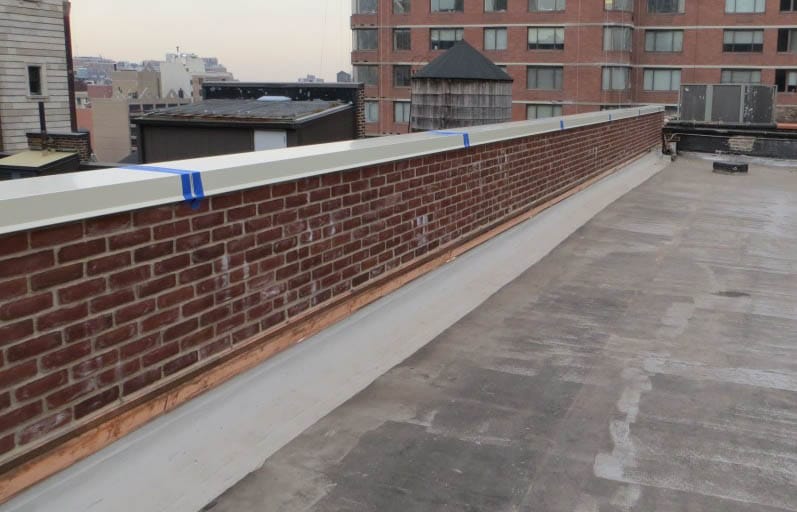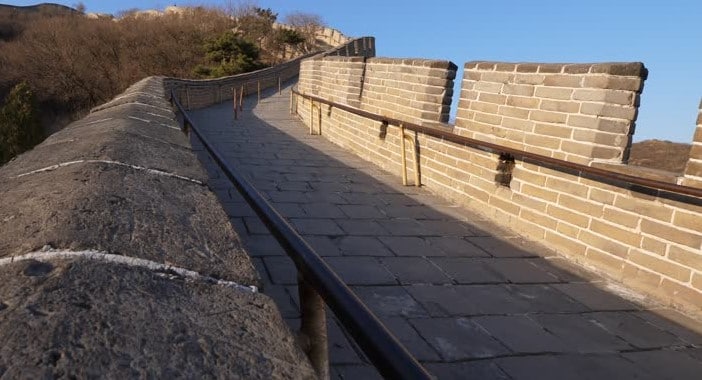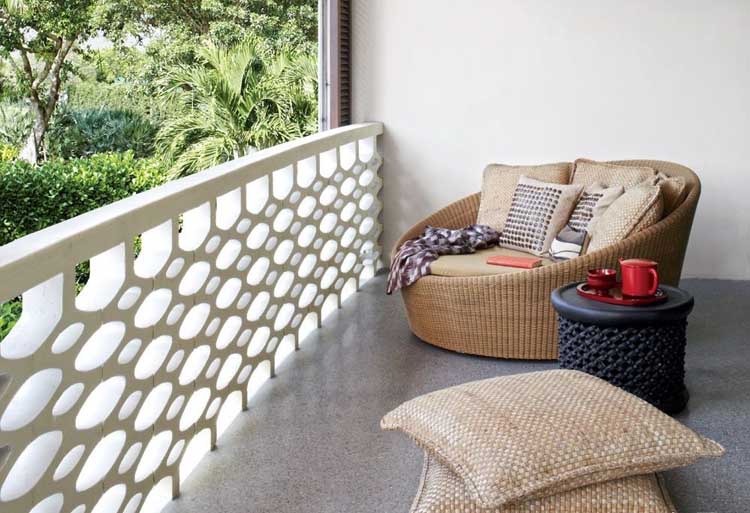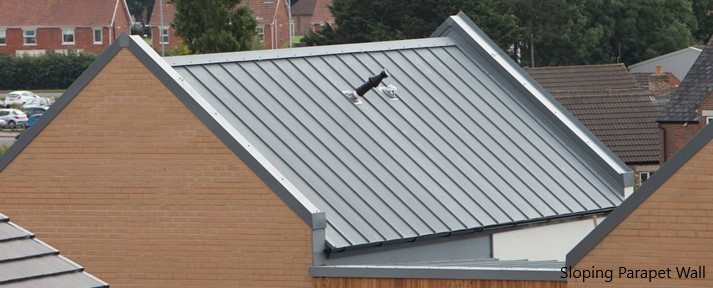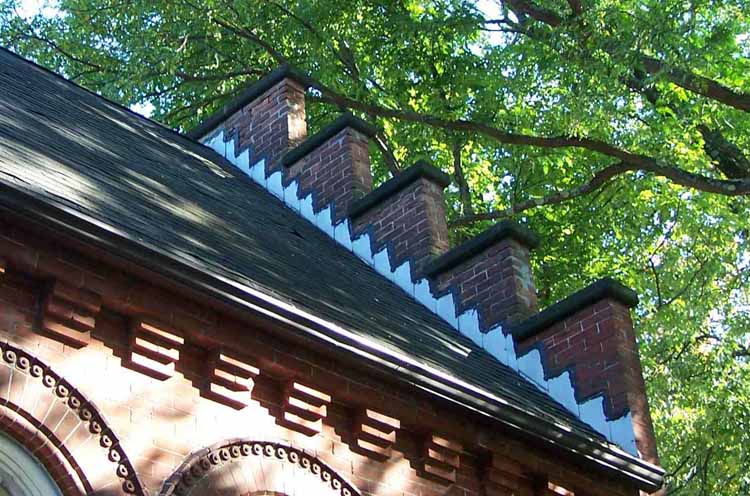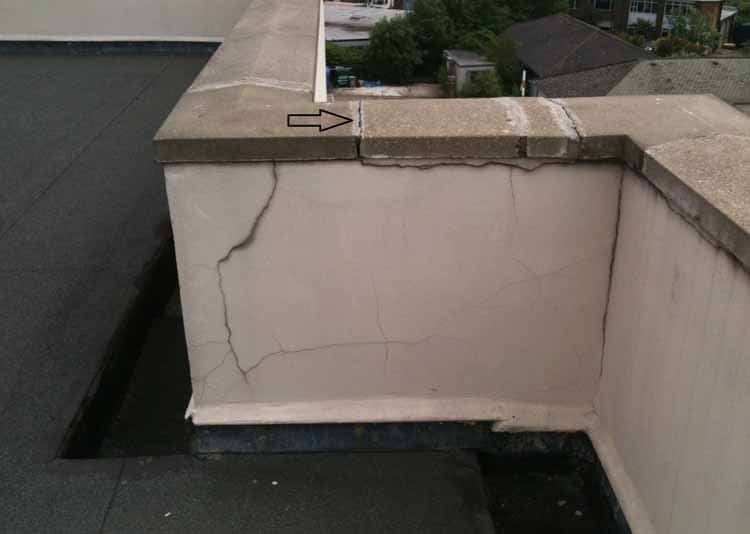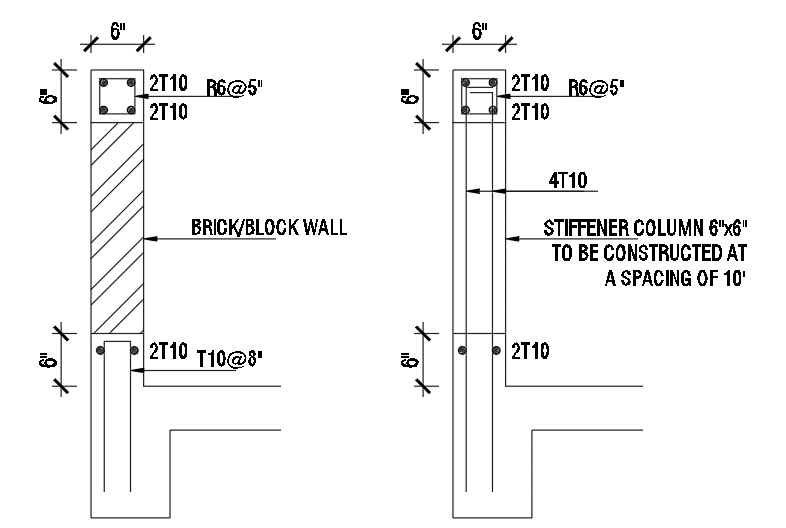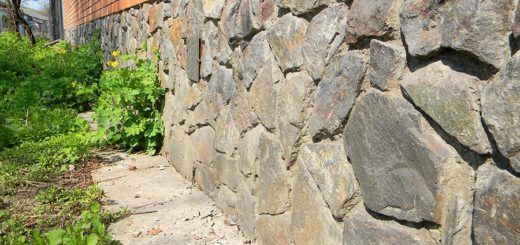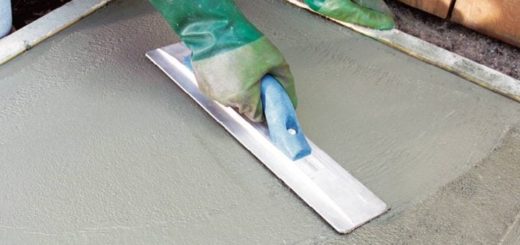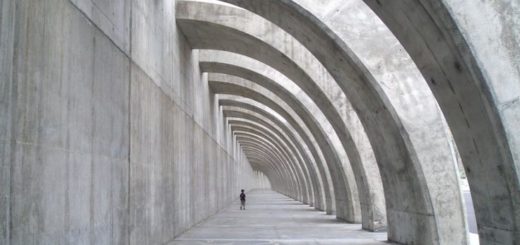Parapet Walls – Types, Uses and Construction
Construction of parapet walls can be observed in buildings, bridges, and roads. In general, there will be parapet walls in almost all the buildings. Whether it is low rise building or high rise building, we need parapet walls as mostly there will be roof slabs, terrace need protection.
There are different reasons discussed in the latter part of this article, for this type of construction. Safety, aesthetic appearance, roof termination, etc are some of the key factors that make us construct the parapet walls.
Let’s see what is the parapet wall?
According to Wikipedia, it is defined as a barrier that is an extension of at the edge of the roof, terrace, balcony, walkway or other structures.
Basically, it is a masonry wall constructed in the above-mentioned locations.
Why we need parapet walls?
We can not keep the boundary of the roof, terrace, balcony, walkway, etc. open without any protection or any barrier to the movement. This is the main reason that we construct walls around the areas discussed in this article.
Let’s see what are the main advantages of having a wall in addition to the protection
Advantages of Parapet Walls
- Utilize the Space: Constructing a wall will allow us to utilize the whole space. Otherwise, it won’t be able to use occupy the area close to the edge in most spaces.
- One of the most important functions of those types of walls are the safety of the occupants.
- Work as a barrier for dust, etc.
- It is a good option for privacy as when it constructed about the 3ft height is converted from the outside.
- It cut the direct wind and work as a wind barrier.
- It provides a better aesthetic appearance to the structure. Different desing or different types of parapet walls can be constructed.
- It provides protection for the equipment installed on roofs.
Technical Information about the Wall
- The height of the wall is 900mm or 3ft. It is based on the safety of occupants. There are guidelines for the height of the wall. Most of this height issued for balconies, roof terraces with access.
- The width of the wall could vary from structure to structure. Generally, it is 225mm or 9inch. However, it could even be constructed by 4″ block walls too.
- Wall that exposed direct sunlight could be cracked if there is no element to carry the tensile stress developed due to the restrain in the wall.
- Stiffnere columns and beam could be constructed to avoid cracking. [refer latter part of the article for construction details]
- Most of the walls are constructed as masonry walls. However, on special occasions, these walls are constructed as reinforced concrete walls.
Types of Parapet Walls
Let’s discuss each type of walls in detail
- Plain Parapet Wall
It is the solid wall constructed as a normal wall like we construct other brick walls. Mostly these walls are constructed as masonry walls. However, in some instances, they could be constructed as concrete walls.
The height of the wall and with of the wall could be based on the relevant architectural and technical requirements. Thus, the minimum height of the wall could be considered as 900mm.
When the parapet walls are constructed in a roof terrace, balcony, etc, the wall should be construed on the concrete kerb projected from the floor in order to avoid the leakages of water between the floor and the wall.
Further, it is advisable to continue the waterproofing into the wall to avoid water seepages through the joints.
- Embattled Parapet Wall
This is the most ancient type of wall constructed in history. They were constructed as a protection wall in castles.
There are openings in the walls to observed the outside and also to arrow shorter to shoot form three.
Further, these openings are in different revelation as protection measures
Since these walls are constructed as protection, the thickness of the wall is fairly high and the height of the walls also very high on some occasions. It varies from structure to structure. However, when it is built for protection, the minimum height is about 1800mm at least.
When these walls are constructed for aesthetic appearance, the height could vary from 3ft.
The walls are mainly constructed as masonry structures.
- Perforated Parapet Wall
The name itself describes the feature of these types of walls. Not like the plain walls, these types of walls hare desing with openings in the wall.
The opening could be a feature and improvement of the aesthetic appearance of the structure.
Heights and with of the wall is the same as the other type of walls.
The design of the wall openings and construction could be created from the masonry wall itself or separate embedments cast as precast elements could also be inserted.
Concrete or steel embedments are mostly used as decorations.
- Pannel Parapet Wall
There are panels on the outside of the wall.
Pannels provide a good aesthetic appearance.
These types of walls can be observed in ancient structures.
- Sloped Parapet Walls
These walls are constructed mainly in connection with the roof.
When the roof is terminated walls are constructed at the edge of the building to facilitate the termination. Further, these walls are constructed just above the roof.
These walls follow the same slop of the roof to maintain a good aesthetic appearance. However, there is occasions where the wall is constructed and finished as a flat wall.
- Stepped Parapet Walls
These types of walls are the same as the sloping walls. However, there are steps in the sloping walls.
It adds a different view of the wall.
Different moldings created to improve the aesthetic appearance of the wall.
- Curved Parapet Wall
This type of parapet wall is a further development of the sloping wall.
There are curved features along the sope of the wall.
Other features of the wall are the same as the normal sloping wall.
- Flat Parapet Walls
Flat walls are as same as plain walls.
These walls are constructed at the same higher. The main features of these types of walls are the same as the plain type walls.
The Wall thickness and height of the wall are also the same as the plain walls.
Parapet Wall Design
The design of parapet walls is done for the lateral loads applied to them.
Since there is no considerable vertical load on the wall, no need to desing for axial loads. However, the effect of the self-weight of the wall needs to be considered when designing for lateral loads.
Walls constructed in roof terraces in high rise buildings, need to design for the wind loads. There will be very high wind loads on the wall when it is tall.
BS 6399 Part 2 or any relevant standard could be referred to calculate the wind loads.
BS 5628 or Eurocode 6 or any relevant standard could be referred to carrying the structural desing of the wall.
The following steps could be followed when designing the wall for wind loads.
- Since it is free at the top, it will act as a free cantilever.
- Calculate the axial stress (σa) due to the self-weight
- Calculate the wind pressure on the wall
- Calculate the bending moment induced by the wind loads at the base level.
- Calculate the bending stress(σw) at the based level
- Calculate the total stress at the base =σa ± σw
- Check whether the maximum and minimum stresses are with the limit as per the relevant standards
Construction of Parapet Walls
The construction method of the wall is the same as the other types of walls. Mix proportions, the brick is placed is the same as the other construction procedures.
Quality control is also the same as the usual construction.
However, the construction detail is a bit different from the other type of walls especially since these walls are exposed to direct sunlight.
In such situations, special construction details shall be followed to avoid cracking of the walls. Otherwise, the parapet could crack.
Further, when it starts to appear the cracks in the masonry walls of this nature, it is very difficult to rectify them. It will also incur a very high cost for the rectification.
In addition, these types of crack could appear again and again even if they are rectified with the best available methods.
Therefore, it is recommended to construct stiffener columns and beams to carry the internal stresses induced due to the thermal effect and restrains in the wall.
Construction details such as the following figure could be implemented when constructing.
As indicated in the above figure, a concrete kerb should be constructed to avoid the seepage of water between the floor and the masonry wall. When there is a kerb, it effectively contributes to the durability of the masonry wall too.
Most of the parapets are constructed with masonry walls. However, these walls could be constructed as reinforced concrete walls as per the particular project.
Parapet Wall Repair
As discussed above, parapet walls could crack due to variations. The main reason is the restain cracks in the walls.
There is a different method to repair the parapet walls.
Let’s see what are these methods to repair the parapet.
- Normally cracked wall could be rectified by applying a suitable crack sealing agent.
- A fiber mesh could be placed before applying the sealing agent along the crack.
- When there are cracks that do appear after the rectification, again and again, the allowance could be made for the expansions. A joint could be created vertically to allow the movement and to release the restrain.
- In addition, when there is no possibility to have an expansion joint, a lintel beam could be constructed along the wall increase the restrain in the top of the wall. This is not the best solution to the issue, as it further increases the restrains in the wall.

